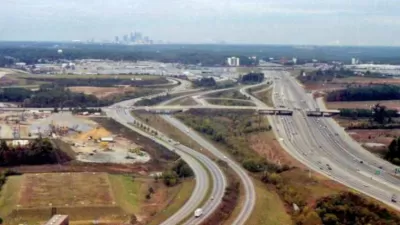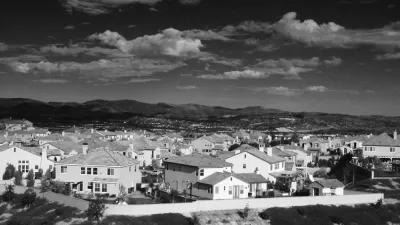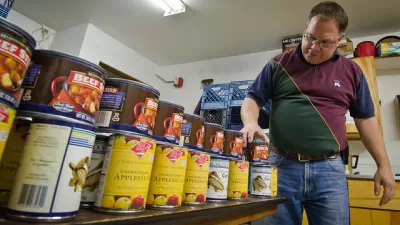Author Scott Allard debunks lingering myths about how people experience poverty in cities. Poverty's suburbanization, he argues, has more to do with the loss of jobs than migration from "inner cities."

Nowadays, poverty's suburban face challenges old notions of "inner cities" as repositories for the less fortunate. According to one narrative, Tanvi Misra writes, "As cities become more expensive, immigrants and communities of color have made a home for themselves outside the urban core—only to come face-to-face with the same issues they left behind."
In an interview, Scott Allard, author of Places in Need, complicates that picture. One of his findings: "When you break out the suburban regions, there are more poor people in the newer suburbs combined than in the older suburbs." At the same time, race doesn't define suburban poverty. "What you see is fairly consistent increases in poverty across race and ethnic groups in the suburbs. The increases among whites are large and substantial, as are increases among blacks and Hispanics."
While plenty of people are moving outward to escape newly expensive "inner cities," migration isn't suburban poverty's biggest driving force. According to Allard, "the most important factor is change in the labor market—the decline of the number of good-paying low-skilled jobs."
FULL STORY: Confronting the Myths of Suburban Poverty

Planetizen Federal Action Tracker
A weekly monitor of how Trump’s orders and actions are impacting planners and planning in America.

Maui's Vacation Rental Debate Turns Ugly
Verbal attacks, misinformation campaigns and fistfights plague a high-stakes debate to convert thousands of vacation rentals into long-term housing.

San Francisco Suspends Traffic Calming Amidst Record Deaths
Citing “a challenging fiscal landscape,” the city will cease the program on the heels of 42 traffic deaths, including 24 pedestrians.

Amtrak Rolls Out New Orleans to Alabama “Mardi Gras” Train
The new service will operate morning and evening departures between Mobile and New Orleans.

The Subversive Car-Free Guide to Trump's Great American Road Trip
Car-free ways to access Chicagoland’s best tourist attractions.

San Antonio and Austin are Fusing Into one Massive Megaregion
The region spanning the two central Texas cities is growing fast, posing challenges for local infrastructure and water supplies.
Urban Design for Planners 1: Software Tools
This six-course series explores essential urban design concepts using open source software and equips planners with the tools they need to participate fully in the urban design process.
Planning for Universal Design
Learn the tools for implementing Universal Design in planning regulations.
Heyer Gruel & Associates PA
JM Goldson LLC
Custer County Colorado
City of Camden Redevelopment Agency
City of Astoria
Transportation Research & Education Center (TREC) at Portland State University
Jefferson Parish Government
Camden Redevelopment Agency
City of Claremont





























